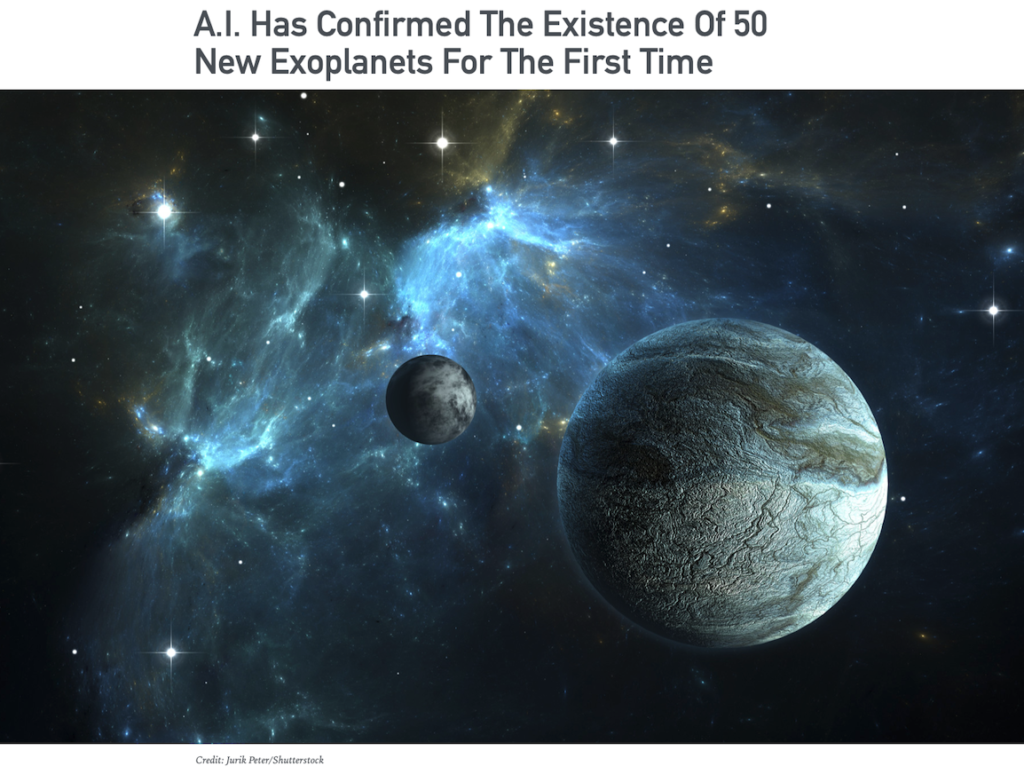
Consider the use of Artificial Intelligence, using algorithms, to successfully search for and find planets orbiting other stars…extra-terrestial planets. This is an example of the amazing advances being made in the use of AI.
Researchers at the University of Warwick have trained a machine-learning algorithm to become a skilled exoplanet hunter. The A.I. was able to confirm for the first time the existence of 50 new planets.
As reported in the Monthly Notices of the Royal Astronomical Society, the planets are quite a peculiar bunch, from Neptune-sized celestial bodies to worlds smaller than Earth. Some orbit their stars in hundreds of days while others in 24 hours.
This is not the first time machine learning has been employed in the search for planets beyond the Solar System. Observatories dedicated to discovering new worlds produce a lot of data. Researchers use algorithms and receive help from citizen scientists to go through the data and look for repeating signals that could hint at the presence of a planet.
If something looks promising, that becomes a candidate planet. Those potential discoveries then need to be validated, which can be done with different methods. For the first time, the new algorithm provides a way to confirm these planets automatically, in a way that it is independent of previous methods.
“In terms of planet validation, no-one has used a machine learning technique before,” Dr David Armstrong, from the University of Warwick Department of Physics, said in a statement. “Machine learning has been used for ranking planetary candidates but never in a probabilistic framework, which is what you need to truly validate a planet. Rather than saying which candidates are more likely to be planets, we can now say what the precise statistical likelihood is. Where there is less than a 1 percent chance of a candidate being a false positive, it is considered a validated planet.”
The team thinks that this approach could be used alongside current methods to help with the large datasets. NASA’s TESS (Transiting Exoplanet Survey Satellite) has already identified 1,835 candidate exoplanets and the mission’s team expects the final number of exoplanet discoveries by TESS to be around 13,000.
“Almost 30 percent of the known planets to date have been validated using just one method, and that’s not ideal. Developing new methods for validation is desirable for that reason alone. But machine learning also lets us do it very quickly and prioritise candidates much faster,” Dr Armstrong continued. “A survey like TESS is predicted to have tens of thousands of planetary candidates and it is ideal to be able to analyse them all consistently. Fast, automated systems like this that can take us all the way to validated planets in fewer steps let us do that efficiently.”
The team will continue to train the algorithm, incorporating new discoveries to make the A.I. better and faster at confirming exoplanets.
By: Alfredo Carpineti | 28 Aug 20, 21:41
